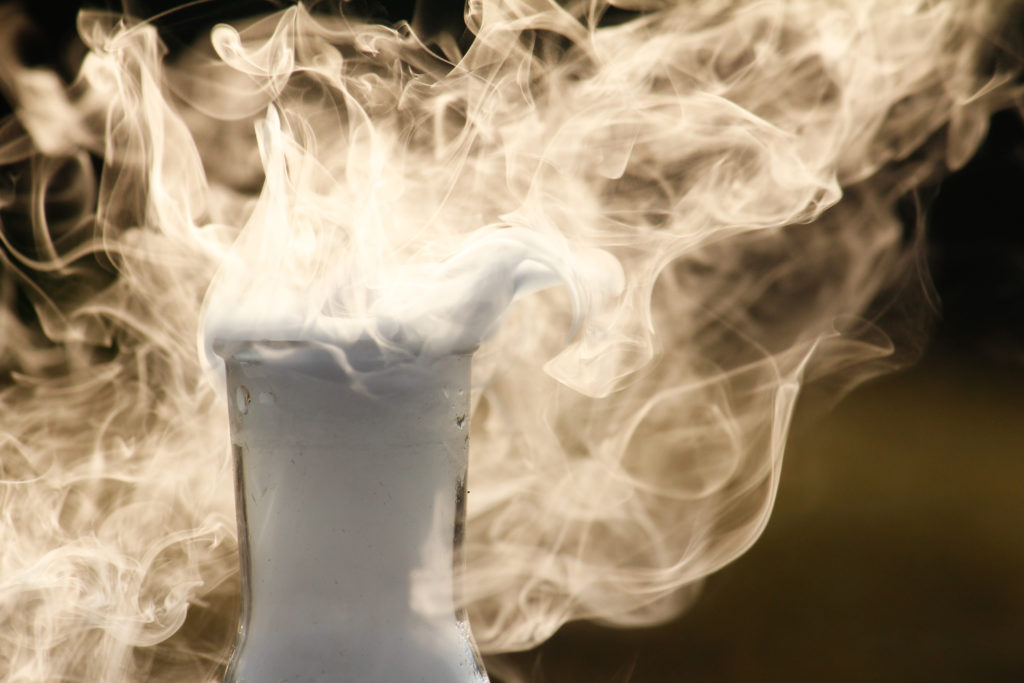What is dry ice?
by Scott Dutfield · 09/10/2019

Image credit: Mikk Mihkel Vaabel
How do rock stars and actors get their atmospheric assistance?
If you’ve ever been to any kind of stage show, there’s a decent chance you’ll have seen dry ice being used. This is the stuff that’s pumped onto the stage to simulate mist and fog, or generally make the place just look awesome, but what is it and how is it made?
Dry ice is actually highly pressurised liquid-carbon dioxide that has been frozen to a temperature of -78.5 degrees Celsius (-109.3 degrees Fahrenheit). The main benefit of using carbon dioxide is that when it warms up it sublimates, which means it changes from solid to gas without becoming a liquid. So if you warm it up and pump it across a stage, it will turn instantly to cool-looking mist, rather than just soaking the floor.
It is also really useful for packing frozen goods that need to stay cool because when it warms up, it turns gaseous rather than wet.
This article was originally published in How It Works issue 64, written by Jamie Frier
For more science and technology articles, pick up the latest copy of How It Works from all good retailers or from our website now. If you have a tablet or smartphone, you can also download the digital version onto your iOS or Android device. To make sure you never miss an issue of How It Works magazine, subscribe today!






